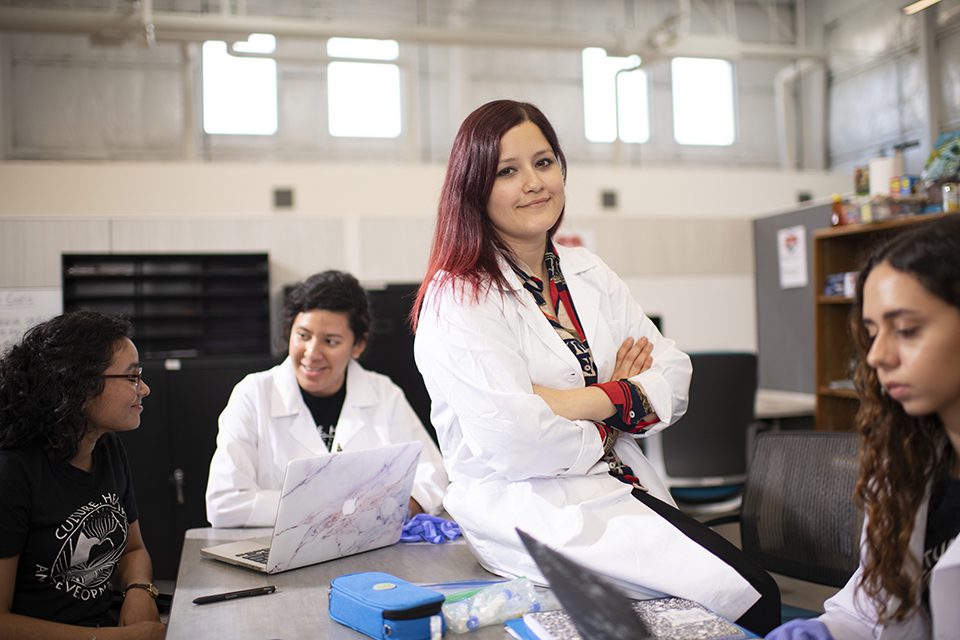
SCVNews.com | CSUN Professor Receives $750,000 Grant to Study Latino Cultural Mismatch
For many first-generation students, the clash between the collective values learned at home and the individualistic norms present in higher education can create an unbearable tension.
It’s a “cultural mismatch,” said the associate professor at California State University Northridge psychology Yolanda Vazquez-Salgado can affect a student’s health and performance — including their grades and decision to stay in school.
Vazquez-Salgado, a first-generation college student and daughter of Mexican immigrant parents, received the first NIH-SuRE award of $725,000 from the National Institutes of Health’s Support for Scientific Achievement (SuRE) program to study the impact of cultural disparity on Latinas. college students attending Spanish-language institutions. Her findings could influence how colleges and universities across the country meet the needs of an increasingly diverse and often first-generation college student.
“In collectivistic or interdependent cultures where family and group goals are prioritized, there can be a tug-of-war between family and school needs,” said Vasquez-Salgado, who is also part of the first cohort of doctoral students in CSUN’s College of Social and Behavioral Sciences. “I saw this firsthand with many of my classmates when I was a student at CSUN. The stress of balancing the two needs can be overwhelming for some students, contributing to health problems or even creating an environment where a student feels like they need to drop out.
“I got over that experience, but some of my peers didn’t,” she said. “This inspired me to start a research program on this topic during my doctoral studies at UCLA. I was determined to understand this phenomenon. Now, as a scholar and professor at CSUN, I continued to delve deeper. It’s a topic I’m very passionate about.”
Among the “mismatches” Vazquez-Salgado will focus on is what she coined the “home-school culture value mismatch,” which is “a mismatch between collectivist family responsibilities and individualistic academic responsibilities,” she said.
She pointed out situations where students may feel the urge or desire to participate in family activities or attend family events that may take up time they would otherwise have spent studying or doing class projects.
“Family is at the heart of many of our communities of color,” Vazquez-Salgado said. “Family responsibilities—helping your family, attending family events, or spending time with your family—are very collectivistic, and while participating in these activities can be very rewarding and bring joy and happiness, sometimes these activities conflict with academic responsibilities—which are individualistic goals. . This is why students are so torn between the two. Being in a situation where you feel forced to make a choice between participating in these activities with your family or focusing on academic goals can be very stressful for students.
“In my experimental work, I found that when first-generation Latinx college students are in a situation where they have to choose between their family and academics, their focus is disrupted,” she said. “They can’t concentrate. They can’t do the job properly.”
Vasquez-Salgado asked first-generation Latinx college students about their lived experiences with this disparity.
“Almost everyone reports that they feel incongruent, and it negatively affects their health — mental, physical — and academics — their ability to concentrate or study, get good grades,”
she said. “These results persisted when I extended my research through a large survey not only to first-generation Latinx college students, but to first-generation college students of any profile.”
Vasquez-Salgado will also study the cultural mismatch that occurs among student peers, which she calls “peer cultural value mismatch.”
“This is a discrepancy between the ideology and practice of students who come from a more collectivist background—they engage in certain practices that support the greater good of the group—and the ideology and practice of students who come from a more individualistic background—they may focus on their own needs, and not the needs of the group,” she said. “This discrepancy may also have negative consequences for student health and academic outcomes.”
Although in her previous work she studied this peer discrepancy among dorm roommates, Vazquez-Salgado said she believes it could extend to peers in the classroom or when they are working together on a project.
Vazquez-Salgado said she hopes her research will lead to a better understanding of cultural mismatches and their impact over time, and how they vary across different types of higher education institutions. She will study cultural discrepancies among students at community colleges as well as teaching and research-oriented universities.
In addition to surveying and interviewing Latinx students for her project, she is expanding her work on this topic by collecting biological and clinical markers of health to reveal how disparity gets under the skin. She will collect health markers such as salivary cortisol and body composition. Cortisol is of particular interest because it is a stress hormone in the body, and its structure can be an indicator of long-term or chronic exposure to stress or the wear and tear of certain body functions.
“I’m trying to understand the broader mechanism that affects the health of students as well as their teachers,” she said.
She does not limit her research to the negative effects of cultural mismatch.
“I also think it’s important to look at the strengths that Latinx students bring from their families and communities back home because there are a lot of strengths in the Latinx community,” Vasquez-Salgado said. “In addition to asking them about their experiences of cultural incongruity, I will also document the resilience and cultural richness that students have to help them navigate the incongruity and thrive.
“This is information we can use to communicate with students, their families and teachers. I believe that the results of this project will have the potential to inform interventions and programs, as well as for larger institutional change,” she said. “Higher education is becoming increasingly diverse, and we need to understand who our students are, what they’re dealing with, and what we can do to help them succeed.”


